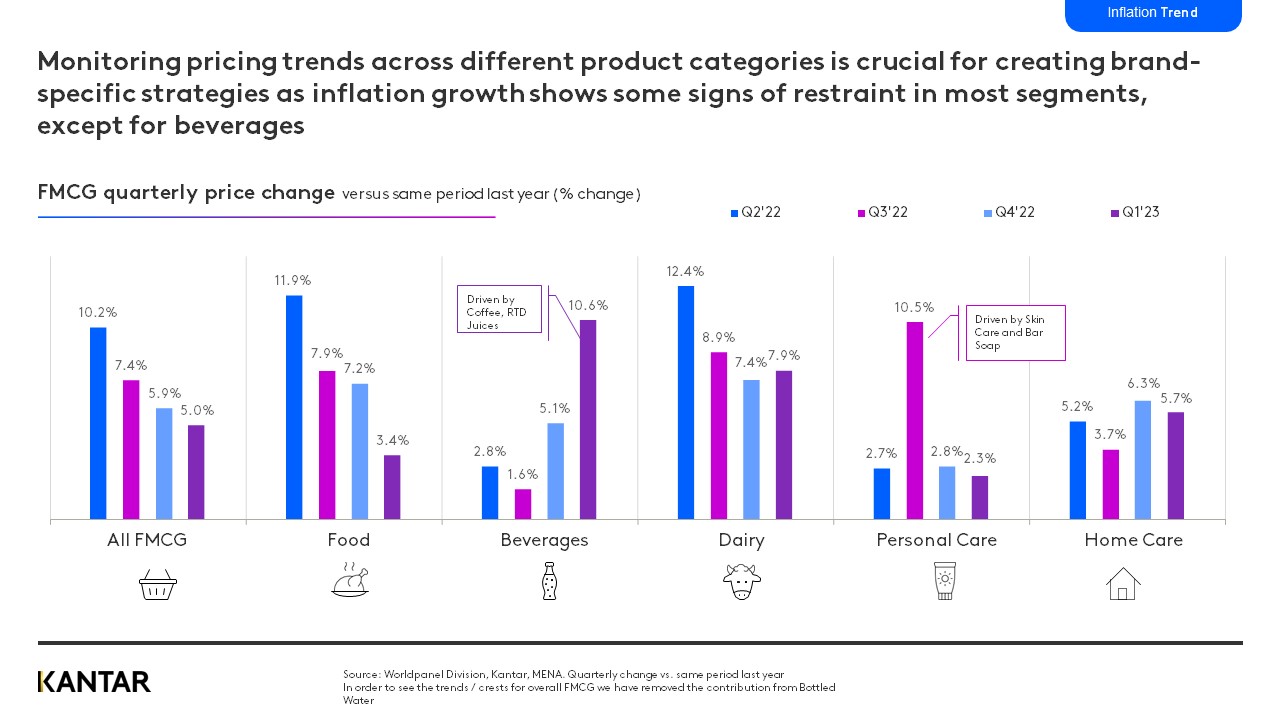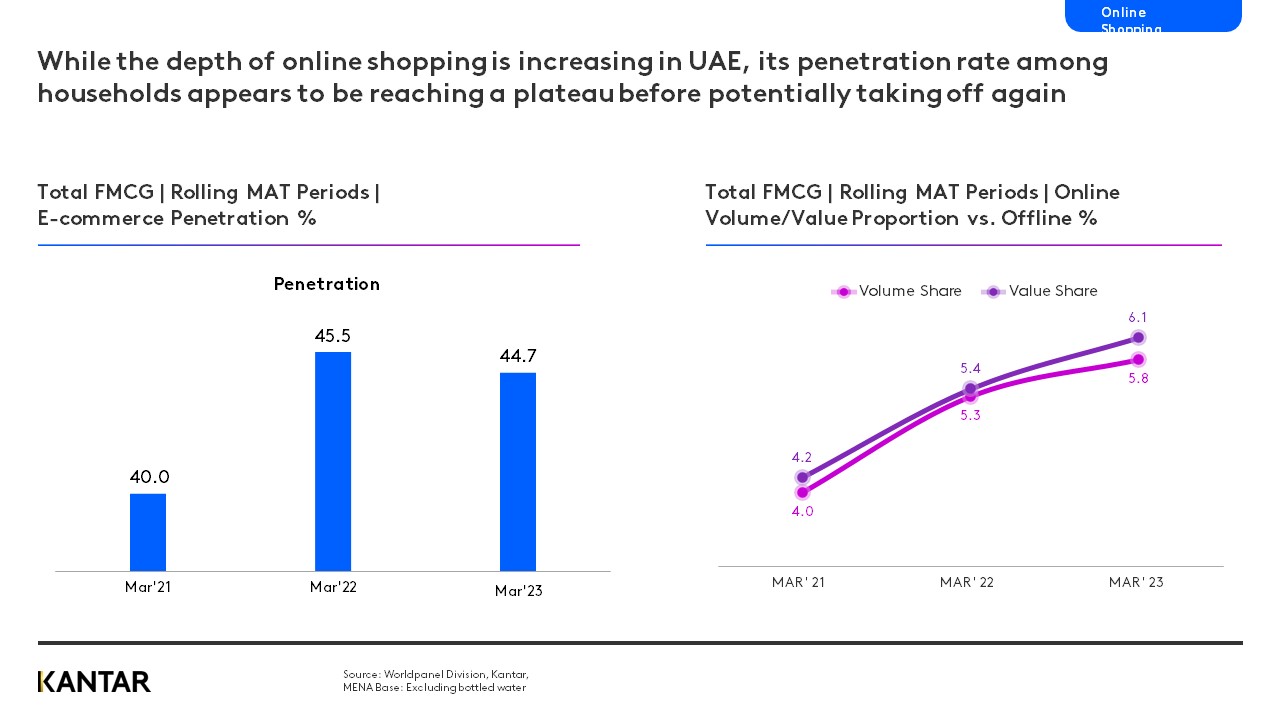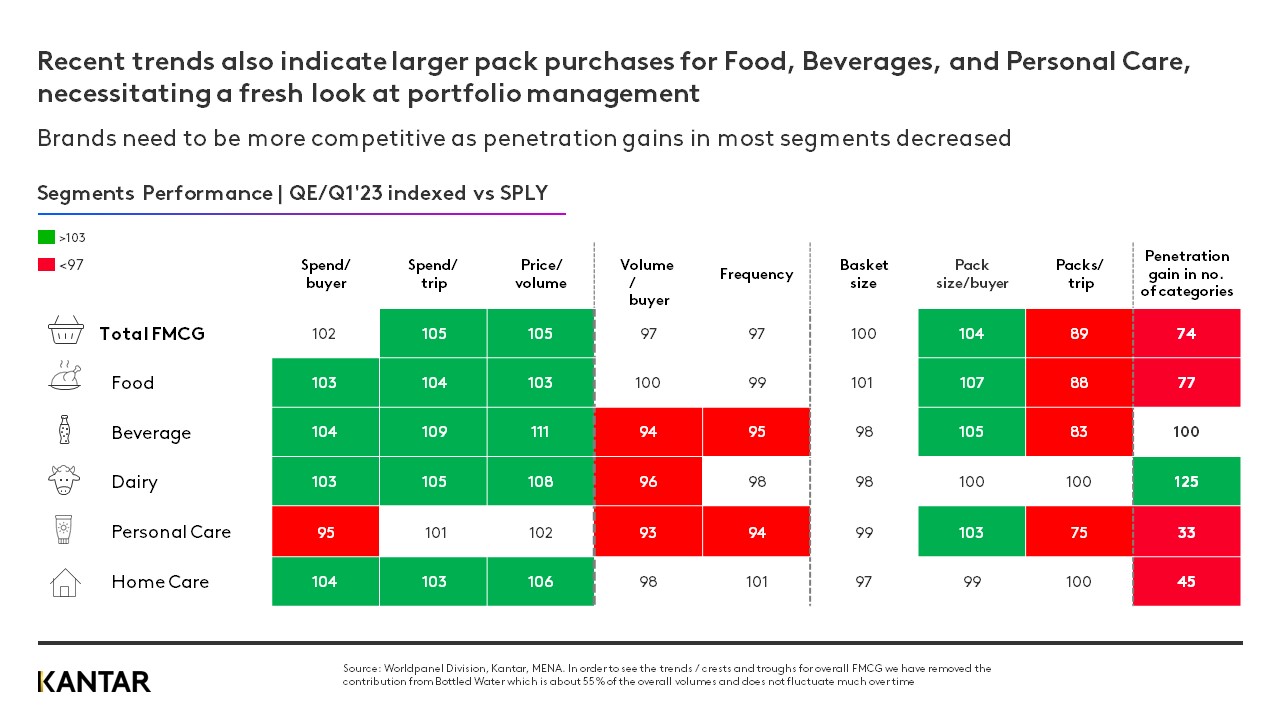Despite a reduction in oil output leading to slower GDP growth in the United Arab Emirates (UAE), performance in non-oil sectors – including FMCG – remains strong. The economy is expected to grow 2.4% in 2023, which is lower than previously projected but still a positive sign.
Inflation in Dubai dropped in Q1 of 2023 to an average of 4.6%, down from 6.2% in Q3 of 2022. However, the easing in Dubai and UAE was slower than in other parts of the world, including the US and the Eurozone.
Price increases are becoming more restrained in most FMCG segments, except for beverages. This makes monitoring pricing trends across different product categories crucial for creating brand-specific strategies.

The relatively moderate price rises have correlated with a slight 1.3% increase in volume in Q1, as buyers rationalise their purchases to a lesser extent. While pricing pressures have been widening the gap between FMCG volume and value, a strong rise in volume purchase over the month of Ramadan in 2023 was a positive development for brands and retailers.
As inflation begins to plateau, the rate of growth in FMCG spend is softening.
Shoppers take action to control spend
In the short term, the primary measure consumers in the UAE are applying to counter their financial pressures is reducing shopping frequency. They are also continuing to reduce volume, and buying fewer packs per trip in some categories. Recent trends also indicate that shoppers are buying larger packs of food, beverages and personal care.
With penetration gains in most segments shrinking, brands need to become more competitive to increase sales and market share. They should leverage opportunities in segments that are experiencing penetration gain, and take a fresh look at portfolio management to adapt to the trend for larger pack purchases where relevant.
Opportunities in hypermarkets and online
A shift in consumer behaviour towards exploring alternative shopping options, for example, hypermarkets, presents both challenges and opportunities for brands. While it increases their exposure to a wider range of customers and enables them to negotiate better partnership deals due to larger volume purchases, competition within hypermarkets is heating up. This makes differentiation challenging. Brands need to adjust both their marketing and product ranges to match hypermarket shoppers' preferences and behaviour.
Only around 11% of the top 600 FMCG brands in the UAE don’t sell online. Online shopping is still growing, driven largely by its convenience and through the increased usage of ecommerce by households in the region.

The size of online pack purchases is gradually decreasing – but shoppers are paying higher average prices in approximately 67% of categories. Half of FMCG brands are selling at a premium online, with the other half selling at a cheaper price than offline. This indicates opportunities for both premiumisation and discounting strategies in the ecommerce space.
Expat Arabs remain at the forefront of online shopping. Increasing participation from other nationalities, especially those in higher socio-economic groups and Emiratis, would drive further adoption within the channel.
Brands and retailers should adjust their strategies to align with the rise of online shopping, including updating their channel mix and product packaging sizes to better align with in-store shopping.
The pandemic has brought about permanent changes to consumer behaviour in the UAE. Overall, the FMCG market remains positive as the region enters a post-pandemic world. However, it’s clear that seasonal factors, along with hikes in basket prices, drive fluctuations in consumers’ purchase behaviour. Brands and retailers must remain flexible, and keep a close eye on the trends in order to develop and execute adaptive marketing strategies.
For more insights, download the full deck by filling in the form below, and get in touch with our experts.


